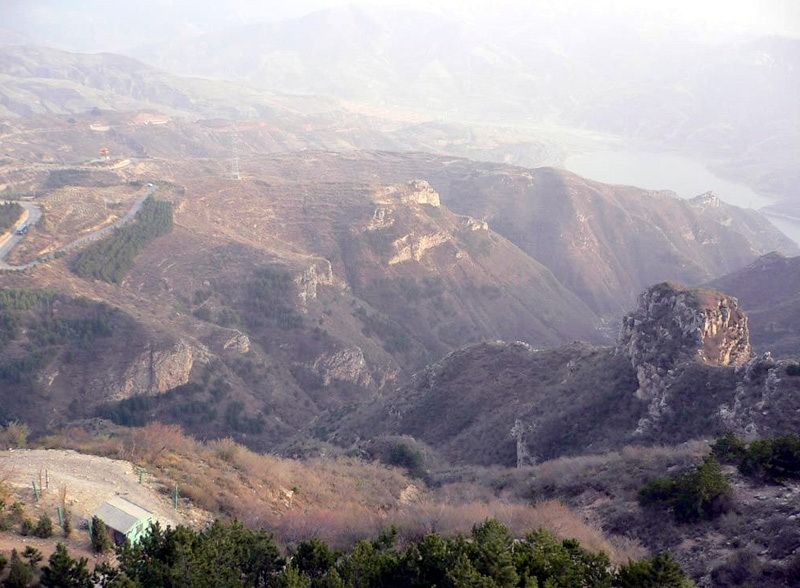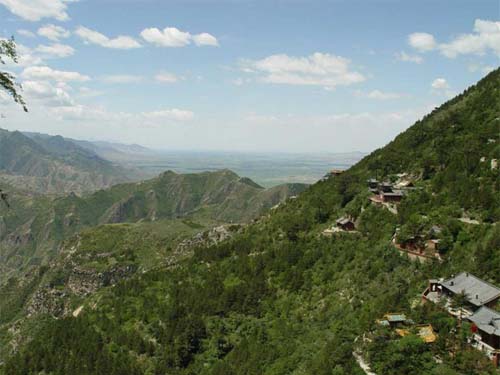Located in northern Shanxi province, Mt. Hengshan is the northern
one of the five sacred mountains in China.
The mountain is connected with the Taihang Mountains in the east and stops
at Yanmen in the west. It shields the land of Sanjin in the south and
protects the city of Datong in the north. Its 100 peaks are widely scattered
on strategic points. In ancient times, troops camped on the mountain,
building blockhouses and plank roads along the cliffs. Many relics are
discovered and well preserved to this day.
The mountain is famous for its "eighteen scenic spots", among which the
Xuankong Temple, built in the Northern Wei dynasty (386-534), is the most
renowned. The temple is built at the waist of the Cuiping Peak and along
the face of a cliff. It faces a deep valley, and dangerous rocks are hanging
overhead while an abyss is at its foot. The temple has some 40 rooms in
higher and lower buildings, which are linked by staircases, winding corridors
and suspended plank roads. Besides, the Beiyue Temple, the Cave Feishi,
the Taifeng Ridge, the Dazi Bank and the Jinlong Mouth are all scenic
spots on Mt. Hengshan. of a cliff. It faces a deep valley, and dangerous rocks are hanging
overhead while an abyss is at its foot. The temple has some 40 rooms in
higher and lower buildings, which are linked by staircases, winding corridors
and suspended plank roads. Besides, the Beiyue Temple, the Cave Feishi,
the Taifeng Ridge, the Dazi Bank and the Jinlong Mouth are all scenic
spots on Mt. Hengshan.
Mt. Hengshan is located in Hunyuan County of Shanxi Province in northern China. It is the Northern Mountain of the "Five Sacred Mountains". Boasting 108 peaks and spanning 150 kilometers, it has an average elevation of 2,017 meters. The Tianfeng Peak, the highest peak, is 2,190 meters above sea level, the highest among the Five Sacred Mountains. Mt. Hengshan is famous for steepy ridges, splendid peaks, exotic-shaped temples, and gushing fountains, together with oddly-shaped stones and forests of ancient trees, which constitutes a beautiful landscape. Mt. Hengshan boasts many cultural relics like temples, sites of academy, steles and engravings, some of which occupy important positions in the development of China's ancient architecture, such as the Xuankong Temple, Yuanjue Brick Pagoda and Yongan Temple.
Related books
|
|
